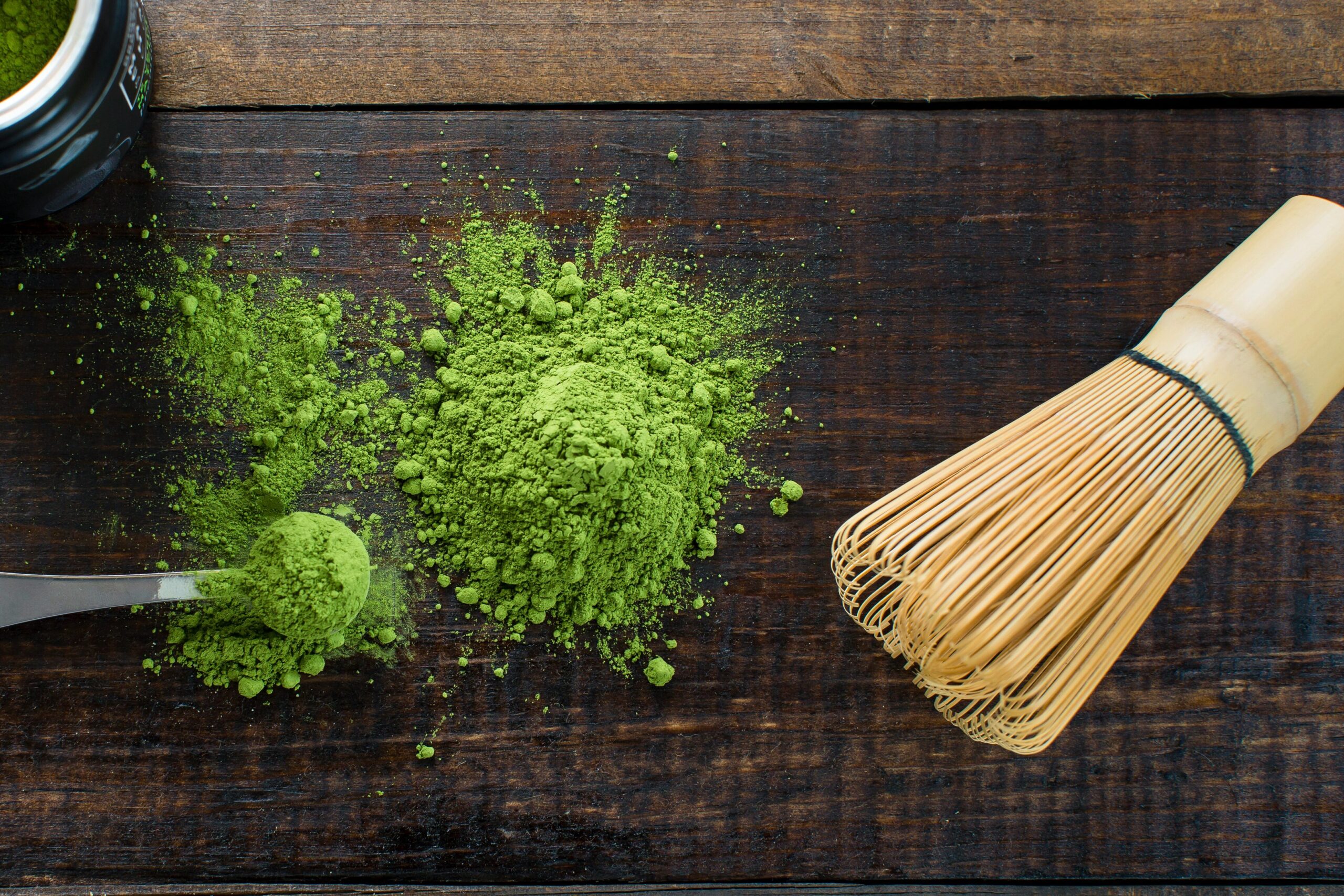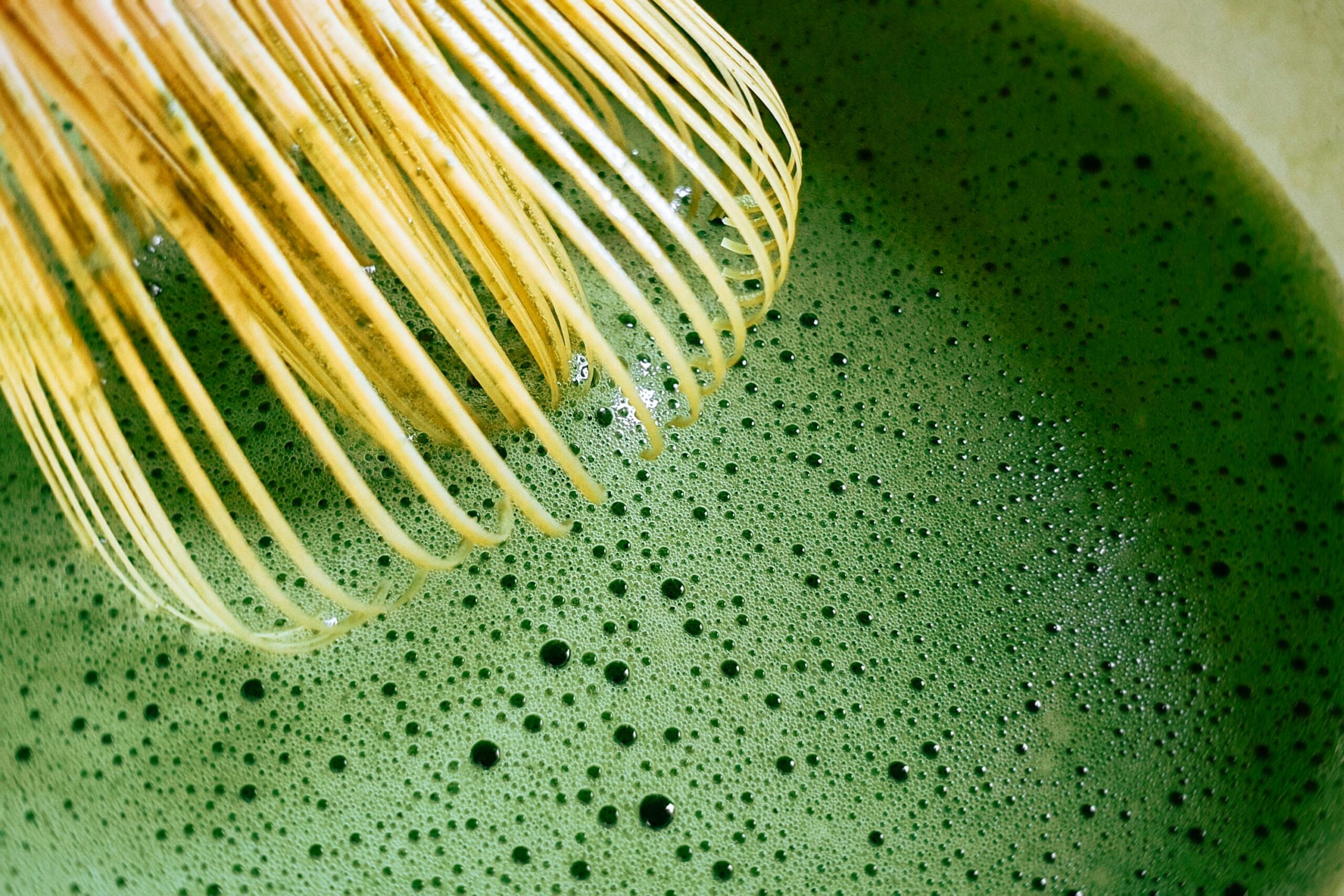みなさんは、お抹茶の泡に違いがあるのをご存知ですか?
今回は、お抹茶の泡(点て方)の違いについてお話しします。

流派による違い
茶道にはさまざまな流派がありますが、代表的なものが「三千家(さんせんけ)」と呼ばれる3つの流派です。
これは、千利休(せんのりきゅう)の孫たちによって分かれた流派で、以下の3つがあります。
三千家
1. 裏千家(うらせんけ) – 現代では最も広く学ばれている流派
2. 表千家(おもてせんけ) – 伝統を重んじ、格式のある流派
3. 武者小路千家(むしゃのこうじせんけ) – 質素で落ち着いた雰囲気を大切にする流派
それぞれの流派には、お茶の点て方や道具の扱い、所作(動作)の違いがあります。
裏千家 – フワッとした泡が特徴
裏千家は、日本国内外で最も広く学ばれている流派です。
お抹茶の表面に、きめ細かい「満月のような泡」を立てるのが特徴です。
• お茶の点て方:茶筅(ちゃせん)を細かく振り、しっかりと泡を立てる
• 所作の特徴:柔らかく流れるような動き
• 道具の違い:茶碗を回してから飲む
この点て方によって、お抹茶の口当たりがまろやかになり、カフェラテのようなクリーミーな味わいになります。
表千家 – 泡を立てない静かな美しさ
表千家は、伝統と格式を重んじる流派です。
お抹茶の表面はほとんど泡立てず、「三日月のように少しだけ泡が浮かぶ」のが特徴です。
• お茶の点て方:茶筅をゆっくり動かし、泡をあまり立てない
• 所作の特徴:落ち着いた動作、静寂を大切にする
• 道具の違い:茶碗を回さずに飲む
お抹茶本来の味がダイレクトに感じられる点が魅力です。
武者小路千家 – シンプルで素朴な茶道
武者小路千家は、質素で控えめな美しさを大切にする流派です。
お茶の点て方や泡の立ち方は表千家と似ており、「三日月のように少し泡を立てる」スタイルです。
• お茶の点て方:表千家と同じく、泡を少なめにする
• 所作の特徴:よりシンプルで実用的な動作
• 道具の違い:全体的に素朴な雰囲気の道具を使う
落ち着いた雰囲気の中で、お茶をじっくり味わうことを大切にしています。
まとめ
どの流派も、それぞれに美しさと魅力があります。
茶道を学ぶときは、流派の違いを知ることで、より深く楽しむことができますよ。
ちなみに、私は、ずっと裏千家で稽古をしているので、裏千家流の点て方が大好きです。お抹茶の表面がふわっとしていて、まるでカフェラテのようなまろやかな口当たりになります。
ぜひ、お好みの点て方を試してみてくださいね。
✔ クリーミーな口当たりのお抹茶が好き → 裏千家
✔ 静寂の中でお茶を味わいたい → 表千家
✔ シンプルで落ち着いた雰囲気が好き → 武者小路千家
Does the way matcha is whisked change depending on the tea school?!
A black matcha bowl with deep green matcha inside—it’s truly a beautiful sight.
But did you know that the froth on matcha can vary?
I’d like to talk about the differences in whisking techniques.
The Differences Between Tea Ceremony Schools
What are the “Three Sen Families” (San-Senke)?
The Japanese tea ceremony has various schools, but the three most well-known ones are called “San-Senke” (Three Sen Families).
These schools originated from the grandsons of Sen no Rikyū, the founder of the tea ceremony.
San-Senke
1. Urasenke – The most widely practiced school today
2. Omotesenke – A traditional and formal school
3. Mushanokōji-senke – A simple and understated school
Each school has unique ways of whisking matcha, handling utensils, and performing the tea ceremony movements.
Urasenke – A Frothy, Creamy Texture
Urasenke is the most widely practiced school both in Japan and abroad.
It is known for whisking matcha into a smooth, full-moon-like froth.
• Whisking Style: Rapid whisking to create fine, thick foam
• Movements: Soft, flowing gestures
• Utensils: The tea bowl is turned before drinking
This style gives matcha a creamy, café latte-like texture, making it very smooth and enjoyable.
Omotesenke – A Minimalist and Elegant Approach
Omotesenke values tradition and formality.
The matcha surface is mostly smooth, with only a slight crescent-moon-like layer of foam.
• Whisking Style: Gentle whisking to create minimal foam
• Movements: Quiet, composed gestures
• Utensils: The tea bowl is not turned before drinking
This style allows the natural taste of matcha to shine through.
Mushanokōji-senke – Simple and Humble Aesthetics
Mushanokōji-senke focuses on simplicity and humility.
Its whisking method is similar to Omotesenke, creating a light crescent-shaped froth.
• Whisking Style: Minimal foam, similar to Omotesenke
• Movements: Simple, practical gestures
• Utensils: Modest and understated designs
This school emphasizes a quiet and contemplative approach to tea.
Summary
Which School Suits You Best?
Each school has its own beauty and philosophy.
Understanding these differences makes the tea ceremony even more fascinating!
✔ If you like creamy, frothy matcha → Urasenke
✔ If you prefer a quiet, refined experience → Omotesenke
✔ If you appreciate simplicity and humility → Mushanokōji-senke
•


